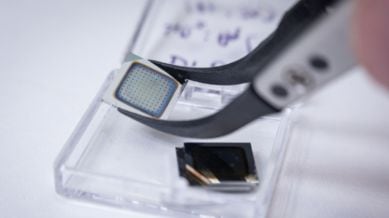New artificial neuron uses electrical pulses to process information in a brain-like manner
According to the research, a single artificial neuron can replicate various pre-motor, motor, and visual behaviours, potentially leading to the development of advanced robotic systems that mimic human functions with minimal hardware.

A stride towards machines that sense and react to the world like humans has been made with the creation of a single artificial neuron that can replicate activity from various brain areas. Scientists have built a “transneuron”, which alternates between functions related to movement, planning, and vision. Additionally, it uses electrical pulses to process information, bringing hardware closer to biological computation.Scientists from the Salk Institute, the University of Southern California, and Loughborough University, England, created the device to mimic actual brain activity. Conventional artificial neurons are limited to a single task. By changing its electrical parameters, the new “transneuron” switches between roles.
“Is the human brain a mysterious device beyond our reach or could we one day recreate it with electronics – and perhaps even build something more powerful?” Loughborough University professor Sergey Saveliev was quoted as asking by the university’s website.
According to Saveliev, the research demonstrates that a single artificial neuron may imitate pre-motor, motor, and visual behaviour. This could enable future chips to carry out intricate functions with little hardware, he continues.
“Ultimately, this paves the way for more human-like robots,” he said.
By delivering electrical signals into the “transneuron” and comparing its pulses with recordings from macaque neurons, the scientists tested the device. With up to 100 per cent accuracy, the device replicated pulse patterns from three different brain areas. These firing patterns varied from irregular bursts to consistent firing.
According to Loughborough professor Alexander Balanov, slight electrical modifications allow the unit to behave like distinct neurons. He added, “We also know that our artificial neurons respond well to changes in the environment, like pressure and temperature, which could be used to create artificial sensory systems.”
He noted that this could lead to artificial sensory systems and faster, energy-efficient computers.
Not simply mimicking neuron activity
The researchers demonstrated that the transneuron processes information in a manner akin to biological neurons, rather than simply mimicking neuron activity. When the input was altered, the device adjusted its firing rate, responding differently to simultaneous signals based on their timing, a feature typically requiring multiple artificial neurons.
The transneuron’s adaptability is attributed to a memristor, a nanoscale component that physically alters as electrical current passes through it. Within the memristor, silver atoms create and disrupt miniature bridges, producing electrical pulses influenced by variations in temperature, voltage, and resistance. This allows for a dynamic shift in neural roles without the need for software adjustments.
Dr Sergei Gepshtein from the Salk Institute highlighted that, unlike conventional computers that operate through fixed procedures, the transneuron approaches the development of hardware that not only simulates brain-like operations in software but functions in a truly brain-like manner.
According to the research, a single artificial neuron can replicate various pre-motor, motor, and visual behaviours, potentially leading to the development of advanced robotic systems that mimic human functions with minimal hardware. The scientists evaluated the transneuron by delivering electrical signals and comparing its output to recordings from real macaque neurons, achieving up to 100 per cent accuracy in replicating pulse patterns across three brain areas.These patterns included both irregular bursts and consistent firing. Professor Alexander Balanov from Loughborough University noted that small electrical modifications allow the transneuron to emulate different types of neurons and highlighted its sensitivity to environmental changes such as pressure and temperature.